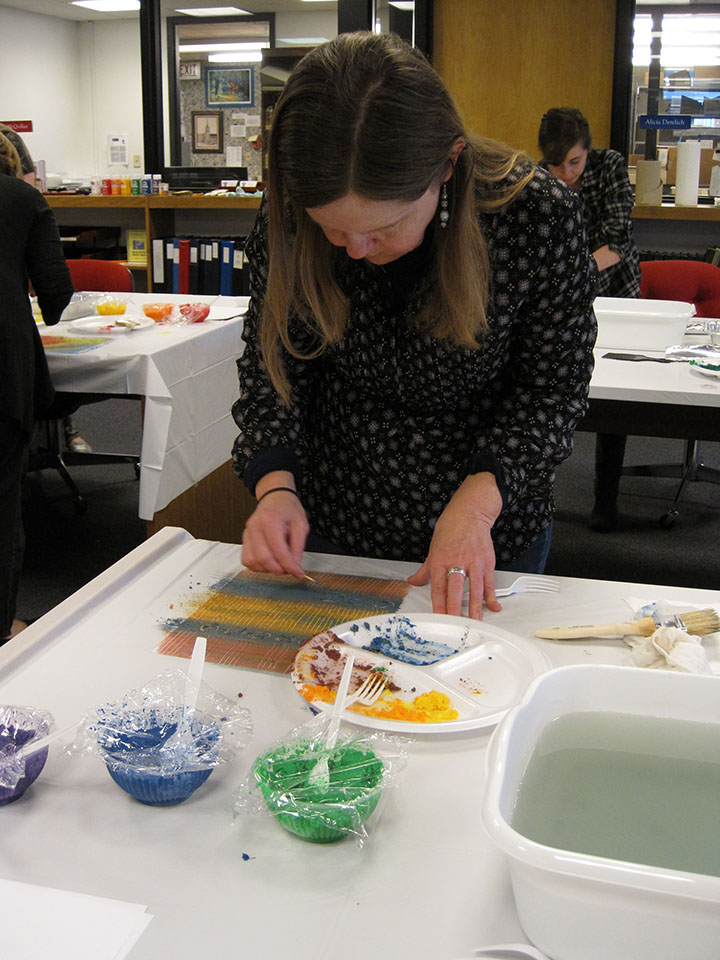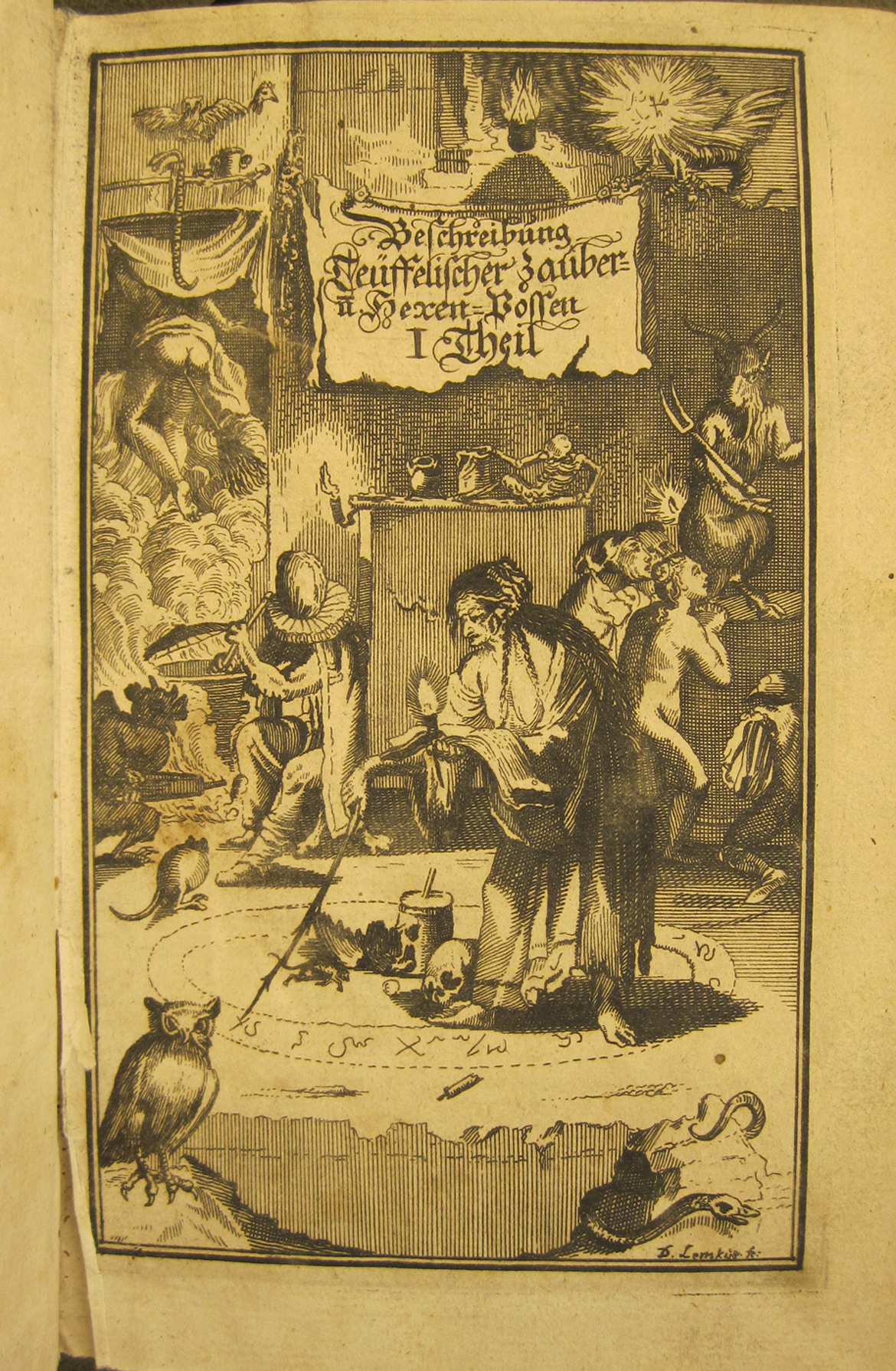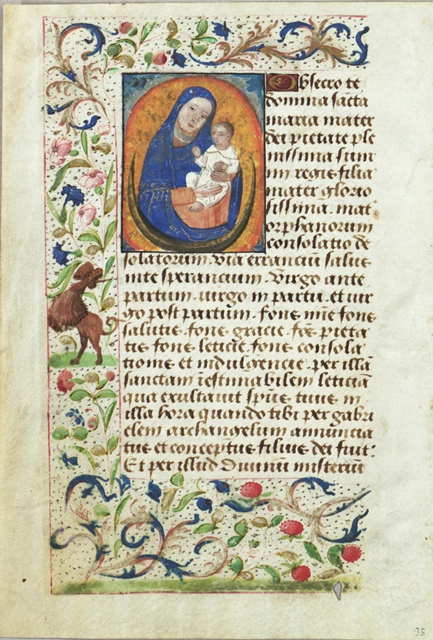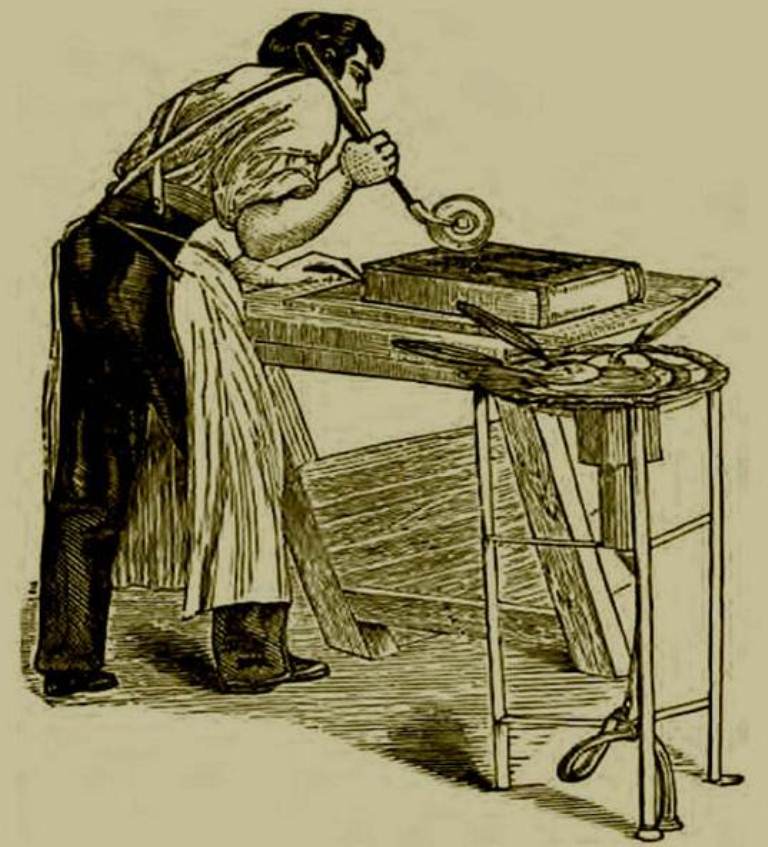On Wednesday, April 6th, the Rare Books reading room underwent its second transformation of the semester from quiet research space to improvised dominotier studio, this time for a workshop in the art of paste paper. The hour-long session – a sequel to our February 11th marbling workshop – was designed to demystify the process by which the pre-industrial decorative bindings on display in our current exhibit, The Binder’s Art, were created. This workshop, like the first, enabled participants to work backwards from page through process by first viewing examples of historical paste paper from our collection, then learning techniques to make their own decorative sheets.

The paste paper workshop’s eight participants – a diverse group of faculty, staff, and students from around the university – perused the bindings currently on exhibit, looked at a selection of paste-decorated covers, endpapers, and edges temporarily exhibited during the workshop, and became acquainted with paste paper reference sources in the rare book collection. Then, following a brief demonstration of the technique paired with an introduction to the tools provided, they were set free to create their own designs.
Participants were provided with six colors of paste (a blend of acrylic paint and translucent, white cornstarch paste – which, an “anonymous” taster informs me, bears no gastronomic similarity to its lookalike tapioca), black and white paper, brushes for applying the paste, and various tools for drawing designs in the thick paint mixture. While all eight attendees were provided with the same materials, you would never guess as much from the sheer range of designs they produced. Paste paper-making is a relatively relaxed art, and the paste’s long dry-time and malleability enabled our participants to take their time, experiment, and infuse their patterns with individual flair.
Here’s just a sample of the papers they produced:
If you, too, would like to make your own paste papers, P.J.M. Marks’ An Anthology of Decorated Papers and Rosamond Loring’s Decorated Book Papers, both available in the Rare Books reading room, are solid resources for beginners. These reference books offer full-page photographs of paste papers, both historical and modern, as well as background information on the history of paste papers. For instructions on how to mix your own paste, try the Cornell University Library Preservation department’s guide to paste paper.
We’ve enjoyed our recent adventures in the decorative arts here at Rare Books, and I hope that we’ve inspired you – as the binders and decorative paper-makers of the past inspired us – to delve into the book arts, in any capacity. Yet I hope that if you try out only one decorative paper technique, it’s paste paper. While there’s a certain magic to marbling and to watching the seemingly weightless paints expand across the surface of the water, the tactile nature of paste paper-making imbues it with a wonderfully childlike quality (despite its potential for creating sophisticated designs) that seems absent from the other technique.
Best of luck in your book arts endeavors!

 by
by 














